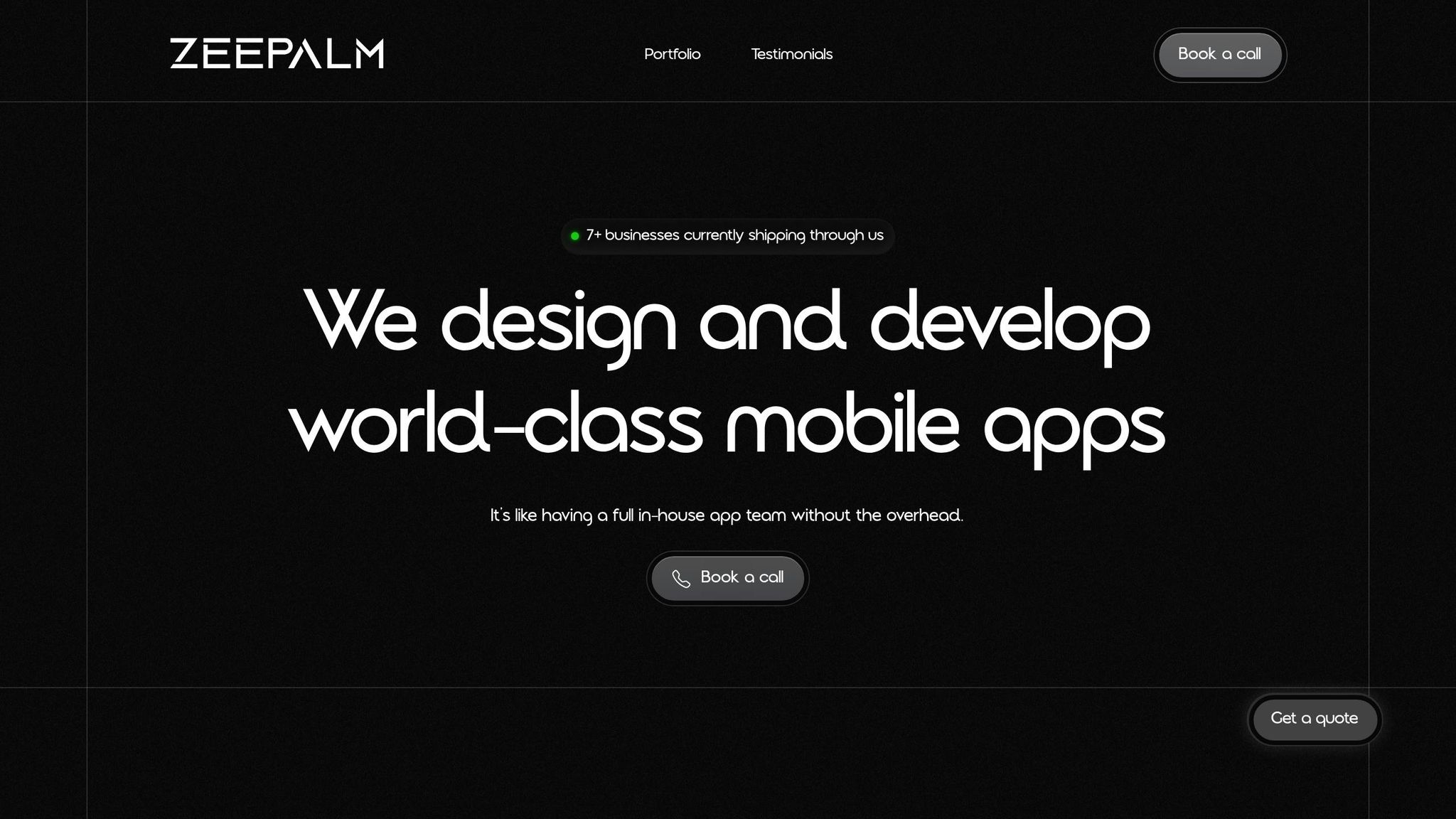Implementing Single Sign-On (SSO) in custom applications enhances user experience, improves security, and reduces administrative burden. Here are the key steps to follow:
- Pick an SSO Standard: Choose between SAML (ideal for enterprise, high-security environments) or OIDC (better for cloud-based apps and smaller user bases).
- Choose an SSO Provider: Evaluate providers like WorkOS, Auth0, AWS Cognito, GCP Identity Platform, Okta, OneLogin, and Microsoft Entra ID based on features, pricing, support, and scalability.
- Design SSO Architecture: Decide between on-premise (more control, higher costs) or cloud-based (scalable, lower maintenance). Consider security, scalability, user experience, integration, and compliance.
- Integrate SSO with Your App: Disable username/password logins, enforce session timeouts, implement deep linking, use domain verification, and Just-In-Time (JIT) User Provisioning.
- Manage Users and Groups: Implement automated user provisioning and deprovisioning, define clear group policies, use role-based access control, and create group hierarchies.
- Test and Debug SSO: Test valid/invalid login attempts, session management, error handling, and cross-browser/device compatibility. Use debugging tools like ssodebug, browser developer tools, log analysis, and testing frameworks.
- Monitor and Maintain SSO: Review logs and audit trails, monitor performance and availability, keep software updated, conduct security assessments, review and adjust policies, and train users.
By following these steps, you can provide a secure and seamless SSO experience for your custom app users.
Related video from YouTube
Pick an SSO Standard
When implementing Single Sign-On (SSO) in custom apps, choosing the right SSO standard is vital. The choice of standard depends on various factors, including the app's user base, security requirements, and technology stack compatibility. Two popular SSO standards are Security Assertion Markup Language (SAML) and OpenID Connect (OIDC).
SSO Standards Comparison
StandardFocusIdeal ForSecurity LevelSAMLAuthentication and AuthorizationEnterprise environments, government, healthcare, and finance sectorsHighOIDCAuthenticationCloud-based and mobile applications, social media, and e-commerce platformsMedium
Factors to Consider
When selecting an SSO standard, consider the following factors:
- User base: SAML is suitable for large, complex user bases, while OIDC is better for smaller, more agile user bases.
- Security requirements: SAML provides stronger authentication and authorization, making it ideal for high-security environments.
- Technology stack: Ensure the chosen standard is compatible with your app's technology stack, including programming languages, frameworks, and infrastructure.
By carefully evaluating these factors, you can select the right SSO standard for your custom app, ensuring a seamless and secure user experience.
Choose an SSO Provider
When implementing Single Sign-On (SSO) in custom apps, selecting the right SSO provider is crucial. With numerous providers available, it's essential to evaluate their features, pricing, support, and scalability to ensure a seamless and secure user experience.
SSO Provider Comparison
The following table compares key features, pricing, support, and scalability options of various SSO providers:
ProviderFeaturesPricingSupportScalabilityWorkOSAdmin Portal, SAML, OIDCFree, custom pricingEmail, phone, documentationHighAuth0Identity-as-a-service, SAML, OIDC$130/mo. (B2B), custom pricingEmail, phone, documentationHighAWS CognitoIdentity-as-a-service, SAML, OIDC$0.015 per SAML MAUEmail, phone, documentationHighGCP Identity PlatformIdentity-as-a-service, SAML, OIDC$0.015 per SAML MAUEmail, phone, documentationHighOktaIdentity governance, SAML, OIDC$2 per user/mo. (SSO), custom pricingEmail, phone, documentationHighOneLoginIdentity governance, SAML, OIDC$4 per user/mo. (Advanced), custom pricingEmail, phone, documentationHighMicrosoft Entra IDIdentity governance, SAML, OIDC$6 per user/mo. (Entra ID P1), custom pricingEmail, phone, documentationHigh
When evaluating SSO providers, consider the following factors:
- Features: Ensure the provider offers the necessary features, such as SAML, OIDC, and MFA, to meet your app's security requirements.
- Pricing: Evaluate the pricing model and ensure it aligns with your app's user base and growth projections.
- Support: Consider the provider's support options, including documentation, email, and phone support, to ensure timely assistance when needed.
- Scalability: Choose a provider that can scale with your app, offering high availability and performance to support a growing user base.
By carefully evaluating these factors and comparing the features, pricing, support, and scalability of various SSO providers, you can select the right provider for your custom app, ensuring a seamless and secure user experience.
Design SSO Architecture
When designing an SSO architecture, consider the overall security, business needs, and user experience. A well-designed SSO architecture should balance security, scalability, and usability.
On-Premise vs. Cloud-Based SSO
There are two primary approaches to designing an SSO architecture: on-premise and cloud-based.
ApproachAdvantagesDisadvantagesOn-PremiseMore control and security, customizableHigher upfront costs, maintenance requiredCloud-BasedScalable, lower maintenance costs, rapid deploymentDependence on third-party provider, potential security risks
Key Considerations
When designing an SSO architecture, consider the following key factors:
- Security: Implement strong authentication methods to ensure user credential security.
- Scalability: Design the architecture to scale with your organization's growth.
- User Experience: Ensure a seamless user experience by minimizing login prompts.
- Integration: Integrate the SSO solution with existing applications, directories, and infrastructure.
- Compliance: Ensure the SSO architecture complies with relevant regulations.
By evaluating these factors and choosing the right approach, you can design an SSO architecture that meets your organization's unique needs and provides a secure, scalable, and user-friendly experience.
sbb-itb-8abf120
Integrate SSO with Your App
Integrating Single Sign-On (SSO) with your custom application involves several technical steps. Here's a detailed walkthrough to help you get started:
Security Considerations
When integrating SSO, security is crucial. Ensure you follow best practices to prevent security vulnerabilities:
Security MeasureDescriptionDisallow username and password loginsDisable username/password-based authentication to prevent unauthorized access.Enforce session timeoutsExpire idle user sessions to prevent prolonged access.Force sign-in for active browser sessionsReplace existing sessions with new ones to maintain security.
Routing and Deep Linking
To ensure a seamless user experience, consider the following:
Routing and Deep LinkingDescriptionAsk users for information to determine the right IDPRequest users' email addresses, account subdomains, or unique account URLs to identify the correct identity provider.Implement deep linkingUse SAML's RelayState parameter to direct users to the correct page after authentication.
UX Enhancements
To improve the user experience, consider the following:
UX EnhancementDescriptionReplace one-off email verification with domain verificationVerify domains instead of individual email addresses to simplify the login process.Use Just-In-Time (JIT) User ProvisioningAutomate account creation for new users signing in via SAML to reduce friction.
By following these steps and considering security, routing, and UX enhancements, you can successfully integrate SSO with your custom application.
Manage Users and Groups
When implementing Single Sign-On (SSO) in custom applications, managing users and groups is a crucial step. This involves setting up a system to handle user authentication, authorization, and access control.
User Provisioning and Deprovisioning
Provisioning involves creating, updating, and deleting user accounts in multiple applications and systems. Deprovisioning involves revoking access to these systems when a user leaves an organization or changes roles.
To streamline user provisioning and deprovisioning, consider implementing automated processes using protocols like SAML and SCIM. These protocols enable secure and efficient user data exchange between identity providers and service providers.
Group Management
Group management involves creating, managing, and assigning user groups to specific roles or permissions. By doing so, you can control access to resources and applications based on group membership.
Here are some best practices for group management:
Best PracticeDescriptionDefine clear group policiesEstablish clear policies for group creation, management, and assignment.Use role-based access controlAssign permissions based on roles rather than individual users.Implement group hierarchiesCreate a hierarchical structure for groups to simplify management and reduce complexity.
By following these best practices and implementing automated user provisioning and deprovisioning, you can ensure a secure, scalable, and efficient SSO system that meets the needs of your organization.
Remember to prioritize security and scalability when managing users and groups in your SSO system. This will provide a seamless and secure experience for your users while protecting your organization's resources and data.
Test and Debug SSO
Testing and debugging are essential steps in implementing Single Sign-On (SSO) in custom applications. This process involves verifying that the SSO integration works as intended, identifying and resolving issues, and optimizing performance.
Testing Scenarios
To thoroughly test your SSO implementation, consider the following scenarios:
ScenarioDescriptionValid login attemptsTest successful logins with valid credentials to ensure seamless access to connected applications.Invalid login attemptsVerify that the system correctly handles invalid login attempts, including incorrect usernames, passwords, and expired sessions.Session managementTest session persistence, expiration, and revocation to ensure that user sessions are properly managed.Error handlingSimulate errors, such as network failures or authentication service downtime, to evaluate the system's response and error messaging.Cross-browser and device testingTest SSO functionality across different browsers, devices, and platforms to ensure compatibility and consistency.
Debugging Tools and Techniques
To effectively debug SSO issues, utilize the following tools and techniques:
Tool/TechniqueDescriptionSSO debug toolsLeverage tools like ssodebug to configure connections, validate basic authentication, and test SSO functionality.Browser developer toolsUse browser developer tools, such as the console and network inspector, to analyze HTTP requests and responses, identify errors, and troubleshoot issues.Log analysisReview system logs to identify errors, track user activity, and monitor SSO performance.Simulation and testing frameworksEmploy frameworks like Postman or SSO Tracer to simulate SSO requests and responses, and test various scenarios.
By thoroughly testing and debugging your SSO implementation, you can ensure a seamless and secure user experience, minimize errors, and optimize performance.
Monitor and Maintain SSO
To ensure the long-term reliability, security, and performance of your Single Sign-On (SSO) system, regular monitoring and maintenance are crucial. Here are some best practices to follow:
Review Logs and Audit Trails
Regularly analyze SSO logs and audit trails to identify potential security breaches, unauthorized access attempts, or anomalous user behavior. Implement a centralized logging solution and configure alerts for suspicious activities.
Monitor Performance and Availability
Continuously monitor the performance and availability of your SSO system, including the identity provider, authentication servers, and connected applications. Track key performance indicators (KPIs) such as response times, error rates, and uptime. Set up alerts for performance degradation or service disruptions to promptly address issues.
Keep Software and Components Updated
Regularly update your SSO software, identity provider, and connected applications with the latest security patches and bug fixes. Stay informed about new vulnerabilities and promptly apply necessary updates to mitigate risks.
Conduct Regular Security Assessments
Engage in regular security assessments, including vulnerability scanning, penetration testing, and code reviews. Identify and address potential security weaknesses in your SSO implementation, authentication mechanisms, and connected applications.
Review and Adjust SSO Policies
Periodically review and update your SSO policies to align with evolving business requirements, security best practices, and regulatory compliance standards. Adjust user access controls, session management settings, and authentication policies as needed to maintain a secure and efficient SSO environment.
Train and Educate Users
Provide ongoing training and education to users on the proper use of SSO, security best practices, and potential risks associated with improper usage. Emphasize the importance of strong passwords, multi-factor authentication, and reporting suspicious activities.
By following these best practices, you can ensure a secure and seamless user experience while minimizing the risk of security breaches and performance issues.
Best PracticeDescriptionRegularly review logs and audit trailsIdentify potential security breaches and unauthorized access attemptsMonitor performance and availabilityTrack KPIs and set up alerts for performance degradation or service disruptionsKeep software and components updatedApply latest security patches and bug fixes to mitigate risksConduct regular security assessmentsIdentify and address potential security weaknessesReview and adjust SSO policiesAlign with evolving business requirements and security best practicesTrain and educate usersEmphasize strong passwords, multi-factor authentication, and reporting suspicious activities
By consistently monitoring, maintaining, and improving your SSO system, you can ensure a secure and seamless user experience while minimizing the risk of security breaches and performance issues.
Conclusion
Implementing Single Sign-On (SSO) in custom applications is crucial for enhancing user experience, improving security, and reducing administrative burden. By following the 7 key steps outlined in this guide, you can successfully integrate SSO into your custom app, providing a seamless and secure authentication process for your users.
Key Takeaways
To ensure a secure and efficient SSO environment, remember to:
- Continuously monitor and maintain your SSO system
- Review logs and audit trails regularly
- Keep software and components up-to-date
- Conduct regular security assessments
- Review and adjust SSO policies as needed
- Train and educate users on SSO best practices
By prioritizing SSO implementation and maintenance, you can provide a better user experience, reduce the risk of security breaches, and improve overall productivity.












